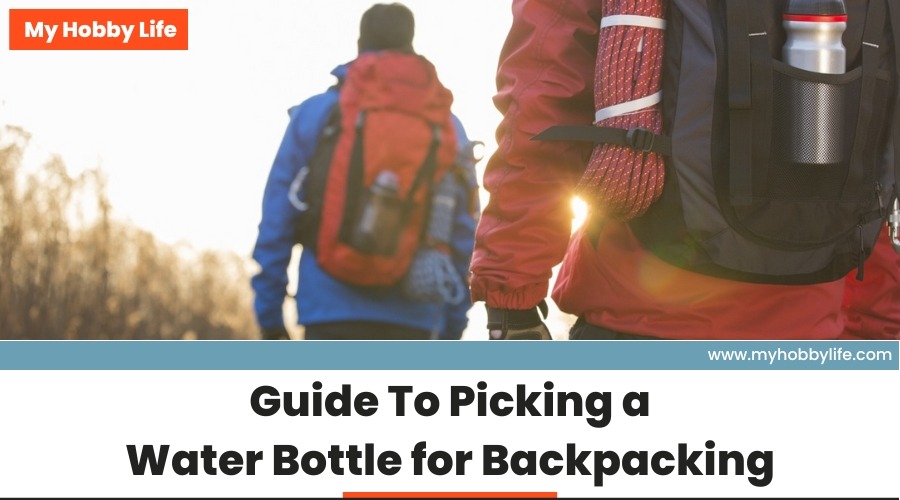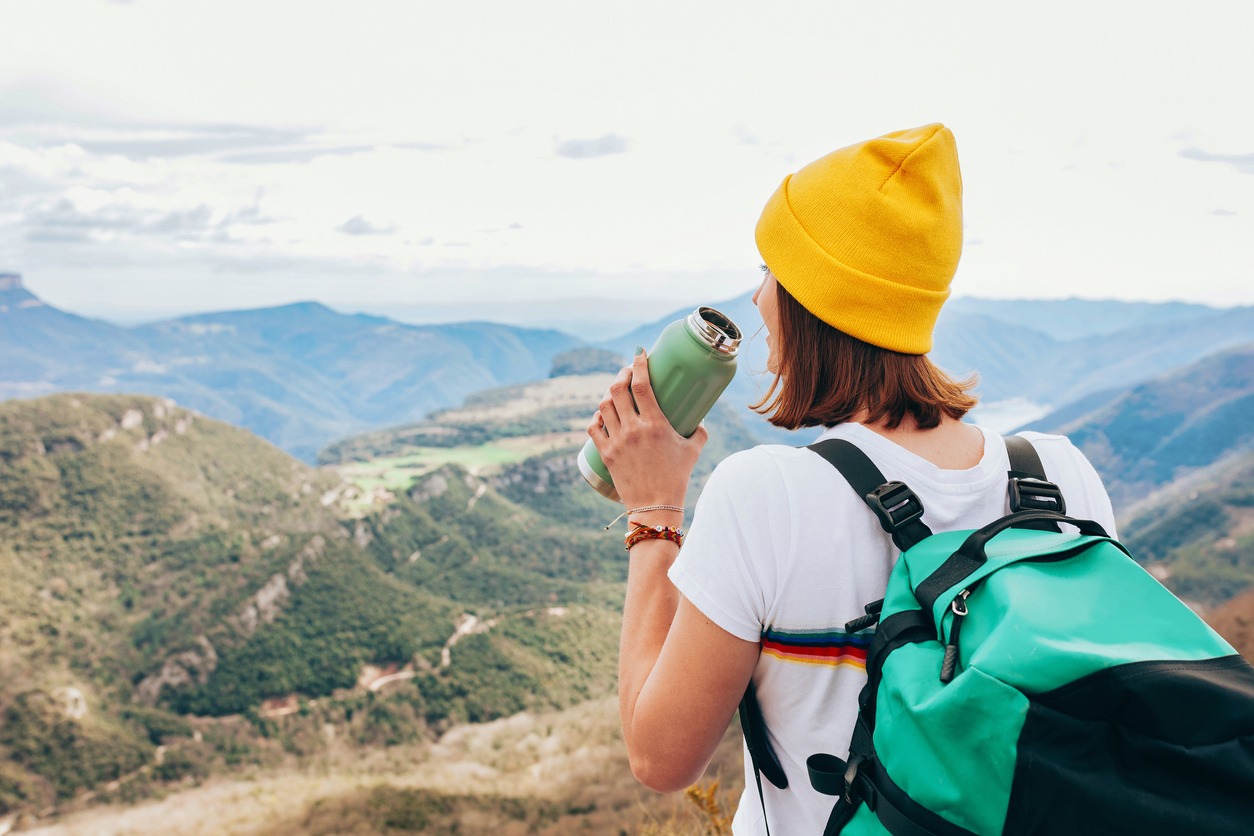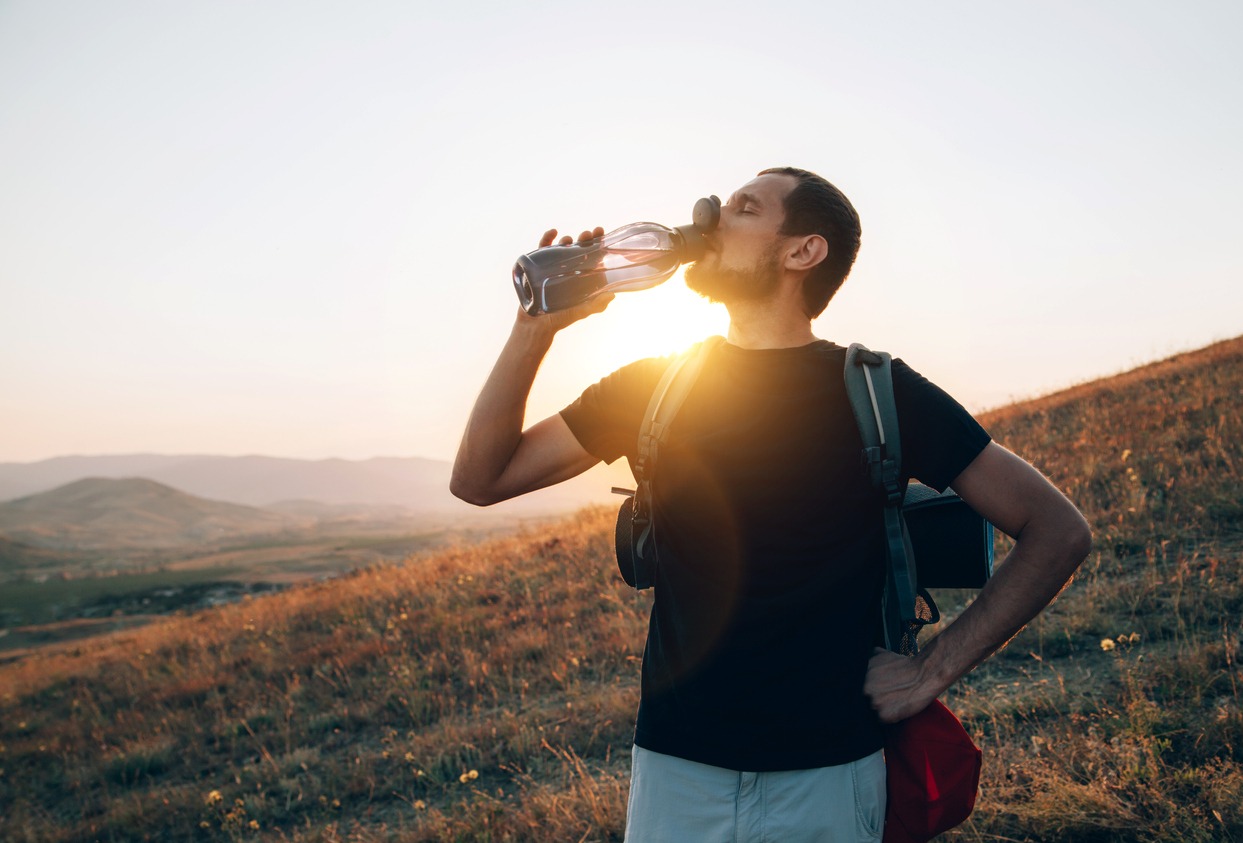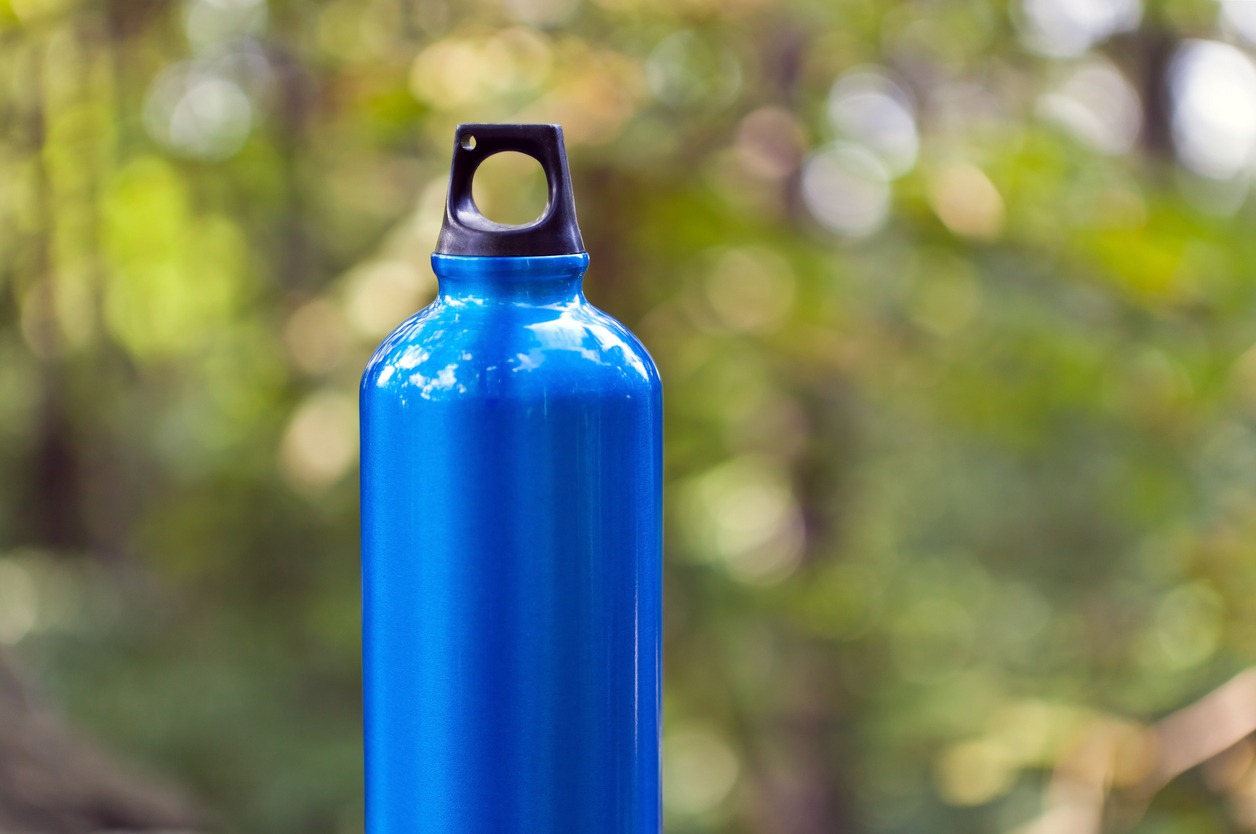Water is one of the most essential things for backpackers. It’s vital to stay hydrated before, during, and after your trip. Even a short outdoor pursuit can make you thirsty, and on a longer adventure, the more you even need to pack a sufficient amount of drink. After all, water is life and you need it to keep your body healthy and functioning.
That’s why carrying a water bottle is a good idea. Just be wary that you shouldn’t be snuggling any random water bottle in your backpack for the sake of it. Note that there’s no “one water bottle for all activities” and choosing the right bottle is paramount to ensuring a wonderful backpacking day in the great outdoors. Not to mention that there are also countless varieties in the market, making the task a daunting affair.
But don’t fret! We’ve listed all the information you need when it comes to picking the best water bottle for backpacking. Read ahead to see our guide, helping you stay hydrated whenever you’re out and about.
Factors to Consider When Picking a Water Bottle for Backpacking
While it can appear intimidating at first, the selection process becomes easier once you know the important factors to consider when choosing what water bottle to bring for your backpacking adventure. Just weigh each aspect carefully and you’ll eventually lead to finding the water bottle that suits your needs and your trip.
1. Material
Water bottles for backpacking are constructed using one of two materials: plastic or metal. Though you’re likely to see glass bottles in stores or online, an obvious drawback is that they are easily vulnerable to breaking or shattering, which makes them unfit for all rigors of backpacking.
For that reason, let’s focus on plastic and metal water bottles. Both materials have certain advantages over the other. You should assess the particular benefits and choose a material that matches your requirement.
Plastic
Plastic is the most commonly used material for water bottles. It’s also the most popular choice for many outdoor enthusiasts – no surprise as plastic offers a lot of incredible benefits that make it apt for different activities.
One of plastic’s biggest advantages is that it’s pretty durable (compared to glass and quite less than stainless steel). They can withstand a certain limit of abuse that you give them, especially if you’re a happy-go-lucky person who’s less cautious about his gear.
Moreover, plastic water bottles are lightweight. That means that opting for the material ensures that you won’t add significant ounces to your backpack. As they’re also easy to make, plastic water bottles are also cheaper and come in a variety of shapes, designs, and colors, making it easier to find one that fits your preference.
Of course, plastic water bottles also have their drawbacks. They can develop a plasticky smell and taste if water is left inside for extended periods or if they’re not cleaned properly. They also do not offer any type of insulation, which means you can’t keep water warm or cold for too long.
You may have also heard or read about plastic water bottles containing a chemical called bisphenol A (BPA), which can seep into the water and has been linked to diabetes and cancer. That’s why it’s important that you check if the water bottle is free from this harmful chemical. A label or visible mark is usually placed on the bottle to clarify that it’s BPA-free and to put your mind at ease.
PROS:
- More durable than glass
- Lightweight
- Cheaper
- Available in a wide array of designs
CONS:
- Less durable than metal
- May develop a plasticky odor and taste
- Does not offer any type of insulation
- May contain harmful chemicals (BPA)
Metal
Metal water bottles can be either made of aluminum or stainless steel. They’re a lot more durable than their plastic counterparts. While they can dent or bend due to more rigorous bumps or knocks on harder surfaces, they won’t crack or puncture as plastic water bottles do. Thus, making them suitable for more serious adventures.
Unlike plastic water bottles, metal water bottles don’t retain any occasional smell and taste. Though it’s true that some may have a metallic tang, it’s an option that’s more agreeable to most people. What’s even great is that they’re fairly easy to clean, so you can quickly get rid of any lingering flavors if ever you decide to switch to energy drinks or other healthy flavored beverages for a specific trip.
Meanwhile, metal water bottles can also provide insulation, allowing you to keep cold drinks cold and hot liquids hot longer than plastic. As it’s also a great conductor of heat, it can also serve as emergency or spontaneous cookware should the need arise.
Like plastic, metal has its own downsides. Be wary that they can be 3-4 times heavier than plastic water bottles, even if they’re of the same size. Plus, metal water bottles can be fairly pricey than plastic. Though you can find cheaper ones in stores or online, they most likely won’t survive beyond a few backpacking trips. Opt for high-quality ones and you’ll have one that can last a lifetime.
PROS:
- Most durable and reliable material
- Can last a lifetime
- Lighter than glass
- Easier to clean
- No plasticky smell and taste
- Can provide insulation
CONS:
- Heavier than plastic
- Expensive
- Prone to dents
- May impart a metallic taste
2. Insulated or Non-Insulated?
Another important consideration is whether you want to get an insulated or non-insulated water bottle. Remember that opting for a plastic water bottle already voids you from that option as it doesn’t offer any type of insulation. It’s when you choose to get a metal water bottle that you need to make a decision.
Note that not all metal water bottles have insulation properties. Single-wall metal water bottles are not insulated, which means that they won’t keep your drinks hot or cold. You can also feel hot or cold when drinking. Hence, your hands may freeze with ice water when backpacking on a winter day.
Yet, their advantage is that they’re lightweight and cheaper as there’s only a single wall of metal and they carry more liquid while consuming the same space of double wall insulated metal water bottles.
On the other hand, double-wall insulated metal bottles feature a vacuum-insulated layer between the double walls. That’s what keeps your beverage hot or cold for extended periods, even in extreme temperatures. Heat energy cannot get into the bottle inside, while hot or cold from the inside also can’t get outside.
Insulated water bottles can hot liquid hot for up to 12 hours and cold liquid cold for up to 24 hours. If you’re having a backpacking pursuit in the summer, these bottles are a must for you so you can beat the heat with cold, refreshing water.
Just be mindful that double-wall insulated metal water bottles are more expensive and heavier than non-insulated water bottles. If you often backpack in extreme weather conditions, prefer your water to be cold as they are, and don’t mind adding a few ounces to your backpack, you’ll most likely be very satisfied with a double-wall insulated metal water bottle.
3. Capacity
Water bottles are offered in a range of sizes or capacities. Typically, they are available in 600 ml to 1.2 liters (16 to 32 ounces) capacity. Some brands offer water bottles with up to almost 2 liters (64 ounces) capacity. The choice primarily depends on your backpacking trip.
A good rule of thumb that many backpackers follow is to carry 1 liter of water for every 2 hours of strenuous activity. Of course, you need to adjust depending on what condition you’re backpacking in.
For instance, you must take the weather and altitude into account, or if you have the option to refill your water bottle. Assess all the factors and strike a balance when deciding on the amount of water to bring on your backpacking trip.
4. Weight
Along with size, you must also consider the water bottle’s weight. Again, that depends on many factors. For instance, if you’re backpacking in a distant remote area, you may opt for an ample-sized ultralight plastic water bottle that won’t weigh and slow you down. The last thing you want is to carry unnecessary weight for your entire trip, making you feel exhausted quickly and taking out the fun.
If you’re doing an easy destination instead, like a short trail close to the city or a 1-2 days hike in the backcountry where you have access to clean water, it’s okay to carry a few ounces and enjoy the durability and other benefits from a double wall insulated metal water bottle.
5. Shape
Gone are the days when water bottles came in standard cylindrical styles. Today, you can find them in a variety of shapes. Some are slender, while others are wider or broader. Some even have square bottoms, while others come in quirky shapes. Though it may be tempting to choose those with unique shapes, remember that you should always prioritize the practicality of the water bottle over its aesthetics.
First, you must ensure that your water bottle can perfectly fit into your backpack’s water bottle holder. If it won’t fit, the allotted compartment won’t serve its purpose. While you can use a carabiner instead and hook the water bottle onto the outside of your pack, expect the water bottle to sway, affecting your balance and making it harder to walk.
Normal-shaped slender water bottles are also easier to grip and are more comfortable to fit in your hand. If you need more capacity, don’t worry as you can find broader water bottles designed with a narrowed center. They still offer the perk of a good grip without compromising on the volume. Just make sure that they are suitable for the size carry pouch of your backpack for easy access.
6. Mouth Opening
As the term implies, the mouth opening refers to the diameter of the bottle’s opening when the top is removed. No specific standard measurements are set to classify the mouth opening as narrow, standard, or wide. Yet, there are general characteristics that apply to differentiate the three.
Clearly, a narrow bottle has the smallest mouth opening and is the hardest to fill. They’re so small that you may even need to shrink down ice cubes in order to fit them. Meanwhile, standard bottles have bigger openings than narrow bottles. It will still be challenging to fit one to two ice cubes vertically at the same time. On the other hand, wide bottles have the biggest opening. You can easily place ice cubes inside to keep it cool or flavor pouches should you wish to level up your water.
While the water bottle’s mouth opening is crucial, it’s something that most backpackers tend to overlook. Narrow and standard-mouth bottles are generally easier to drink from. However, they can obviously be a pain to refill.
Meanwhile, wide-mouth water bottles are easier to fill no matter what water source and are usually compatible with different water filters. You can also use them to carry thicker liquids like shakes and smoothies. Plus, they are also much easier to clean. A drawback is that they can be harder to drink from and are likely to cause water to splash down your chest.
7. Quick Access vs. Screw Cap
You can also see drinking cap options for water bottles but they are generally categorized as quick access or screw cap. Each of them has its own advantages and disadvantages, depending on your preference and needs.
Quick access caps are available in a variety of options, such as straws to button-operated flip caps. An apparent perk of these caps is that they allow fast, one-handed access to your water. They are also more convenient and fun to drink from, which in turn increases your likelihood to drink often. Their downside is that these caps have more parts that are prone to breakage or malfunctioning. Moreover, these quick access caps tend to get dirtier easily. If you spend continuous days backpacking, you need to sanitize them more often.
On the other hand, screw caps are pretty simpler and are easier to refill. There’s also less chance of them failing or breaking. As there are no smaller parts, they are also easier to keep clean and maintain their cleanliness. Plus, they are less likely to open suddenly and leak water into your backpack and things.
Cleaning Your Water Bottle
Whichever type of water bottle you choose for your backpacking trips, cleaning it regularly will ensure its longevity, better taste, and better safety for yourself. Both hard plastic and metal water bottles are generally dishwasher-safe but the best way to clean them is through handwashing. Washing water bottles along with dishes and utensils may damage them and allow food particles to seep into the bottles, resulting in bacterial growth.
What you can do instead is use hot, soapy water to clean them and utilize accessories like straw brushes and cleaning wands to reach hard spots. If you opt for a narrow-mouth water bottle, you can place raw rice inside the bottle, fill it with water and gentle soap, and then shake the bottle to clean all the areas.
Once a week, use vinegar or a stronger detergent to disinfect your water bottle, especially if you’re using it frequently and for other types of beverages aside from water. Don’t also miss out on cleaning the lids, threads, and crevices. After every wash, leave the lid open and let all parts completely dry out so it won’t be a breeding ground for mold and germs that thrive in moisture.
Takeaway
Getting the right water bottle for your backpacking trip can be a great advantage as you pursue the great outdoors. Use all the information above and always stay hydrated with the perfect water bottle to suit your next adventures. Happy backpacking!



